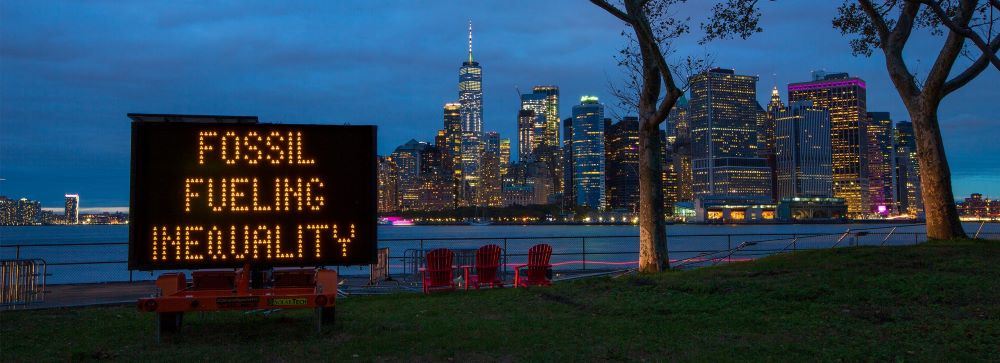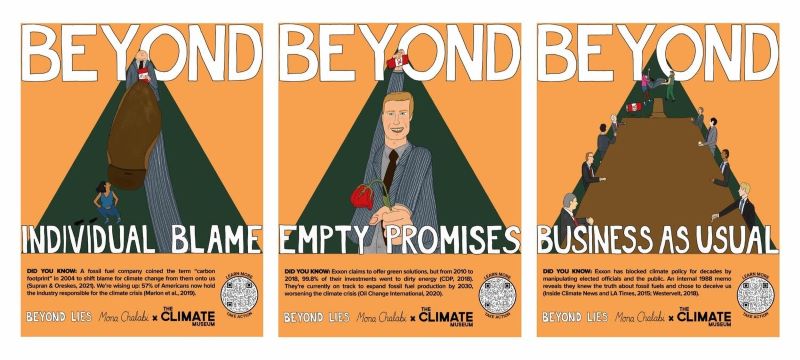“To be silent is not neutral”: Curating collective action at The Climate Museum
Anais Reyes and Dilshanie Perera in conversation with Katharina Anzengruber and Elke Zobl
The Climate Museum in New York City is engaging in conversations around climate. By bringing the museum to the people, they aim to start a cultural shift and to empower people to action. Anais Reyes and Dilshanie Perera talk about their work at the Climate Museum, different exhibitions and actions, and the urgent need to bring the climate crisis into public and personal conversations in order to create that cultural shift. Starting dialogues and building communities that empower people to take collective action is the museum’s main goal.
Could you briefly tell us what the Climate Museum is about? Where does your individual focus lie?
Anais Reyes: The Climate Museum is the first museum in the United States focused on climate change. Our mission is to inspire action on the climate crisis with programming across the arts and sciences that deepens understanding, builds connections, and advances just solutions.
We think of our constituency as the people who are worried about climate change, but feel uncertain of what they can do about it. We know that 66% of Americans— 2 out of every 3 people—are worried about the climate, but only 6% are taking action. That includes even just speaking about climate change. So we are really working to push that leftover 60% of worried people toward active engagement. After our first few programs, we realized that every program we do has to connect people to collective actions—ones that go beyond individual consumer choices and ask people to work together to target the very social and societal structures that have caused or worsened the crisis we are in today.
I am the Senior Exhibitions Associate at the Museum, so I do various things related to planning exhibitions—from working with artists to researching scientific concepts and data to consulting with experts across fields to planning events and talking with visitors. It’s a really great experience getting to conceptualize a whole project, see the public response, and have thoughtful conversations with our audience. For example, on July 31, we had a kick-off event for our Beyond Lies campaign. I got to talk to visitors about the history of disinformation put out by the fossil fuel industry, their role in creating the climate crisis, and what the public can do about it.
Dilshanie Perera: I’m the Andrew W. Mellon Foundation Post-Doctoral Fellow in Climate and Inequality at the Climate Museum, so I am lucky to work on different kinds of programming, ranging from curatorial work to youth programs to assembling a public series of conversations that bring together climate and inequality. It is unique for a museum to critically engage both climate and inequality in its programming, and to do so through an activist lens. We think about what it means to substantively engage in social justice issues and really center those in discussions of climate. I think the Climate Museum is very unique in how we create public dialogues on climate, weaving together broader academic research and expertise from a number of fields including activism, science, journalism, community organizing, public health, policy, and beyond.
Dilshanie Perera, Anais Reyes, Katharina Anzengruber, Elke Zobl ( 2021): “To be silent is not neutral”: Curating collective action at The Climate Museum. Anais Reyes and Dilshanie Perera in conversation with Katharina Anzengruber and Elke Zobl. In: p/art/icipate – Kultur aktiv gestalten # 12 , https://www.p-art-icipate.net/to-be-silent-is-not-neutral-curating-collective-action-at-the-climate-museum/



 Artikel drucken
Artikel drucken Literaturverzeichnis
Literaturverzeichnis